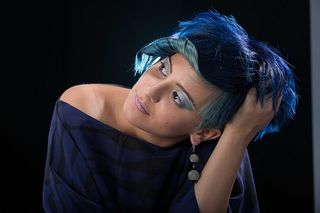Does Ripping Facial Hair Out by Root Stop It From Growing Again

Source: Claudio Terribile/Pixabay
Pulling, twirling, plucking, twisting, tugging, or playing with your hair – are these all just harmless habits? It is reported that for an estimated 4% of the population, hair pulling is so much more than just a bad habit. The act of compulsively engaging in repetitive hair pulling that results in noticeable hair loss is classified in the Diagnostic and Statistical Manual (DSM5) as trichotillomania or compulsive hair pulling disorder. Trichotillomania, together with other compulsive behaviors such as compulsive skin picking and nail biting, fall under the umbrella term Body-focused Repetitive Behaviors (BFRBs). However these compulsions do not suddenly appear overnight. Those who suffer with these disorders are often unable to pinpoint exactly when the behavior first started. It is a behavior that may very well have started out as a habit, but through repeated engagement and some form of positive reinforcement the habitual hair pulling eventually evolves into a disorder.
From Habit to Disorder
First we must address the question, "what is a habit?" According to the Oxford English Dictionary, a habit is "a settled or regular tendency or practice, especially one that is hard to give up", and in psychological terms it is "an automatic reaction to a specific situation". Many people with hair pulling disorder would be able to relate to the definition of a habit as an apt description of their experience with hair pulling. However, even though bad habits are undesirable or have a negative impact on your general well being, it does cause significant dysfunction. The combination of the person not being able to stop engaging in the behavior despite wanting to, with significant functional impairment, signals the onset of a clinical disorder.
How do I know if I have Trichotillomania?
According to the DSM5, the diagnostic criteria for trichotillomania consists of:
- Recurrent hair pulling resulting in noticeable hair loss
- Repeated attempts to decrease or stop hair pulling
- The hair pulling causes clinically significant distress or impairment in social, occupational, or other important areas of functioning
- The hair pulling is not attributable to the psychological effects of a substance (e.g., cocaine) or another medical condition (e.g. alopecia)
- The hair pulling is not better explained by symptoms of another mental disorder (e.g., delusions or tactile hallucinations in a psychotic disorder, attempts to improve a perceived defect or flaw in appearance in body-dysmorphic disorder, stereotypes in stereotypic movement disorder or tics)
Hair pulling can be targeted at any part of the body where there is hair - scalp, eyelashes, eyebrows, even the pubic area. The compulsion can be so severe that the individual can spend hours pulling. Not only does this have a negative impact on the person's day-to-day functioning, the after-effects of a pulling episode often includes feelings of shame and guilt. trichotillomania can be an extremely debilitating condition, but is often misunderstood by those who are not afflicted by the disorder. Friends and loved ones, with good intentions, often tell the person to 'just stop' as there is the perception that all it requires is the power of will.

Source: Ryan McGuire/Pixabay
Can it be treated?
Unfortunately there is still very little awareness of trichotillomania and other BFRBs so these disorders often go undiagnosed and those suffering with the disorder are left feeling alone, ashamed and embarrassed by their behavior. As with all mental illness, awareness of your condition and acknowledgement that your suffering is due to a recognized clinical condition is the first and most important first step to recovery. There are many advocacy and support organizations such as the Trichotillomania Learning Centre (TLC) who are working hard to increase awareness about the disorder among the greater public, and to advance the knowledge, understanding and expertise among health professionals. Trichotillomania is a chronic condition. Much like a physical chronic condition like diabetes, it is a condition that must be managed not cured. But there is hope. Cognitive Behavioral Therapy (CBT) has proven to be the most effective form of therapy in treating BFRBs including Trichotillomania. We still have a long way to go in our understanding of this this condition, but we have made a start and there have many successes with the knowledge we have thus far.
Source: https://www.psychologytoday.com/us/blog/mastering-hair-pulling/201603/why-cant-i-stop-pulling-my-hair
0 Response to "Does Ripping Facial Hair Out by Root Stop It From Growing Again"
Post a Comment